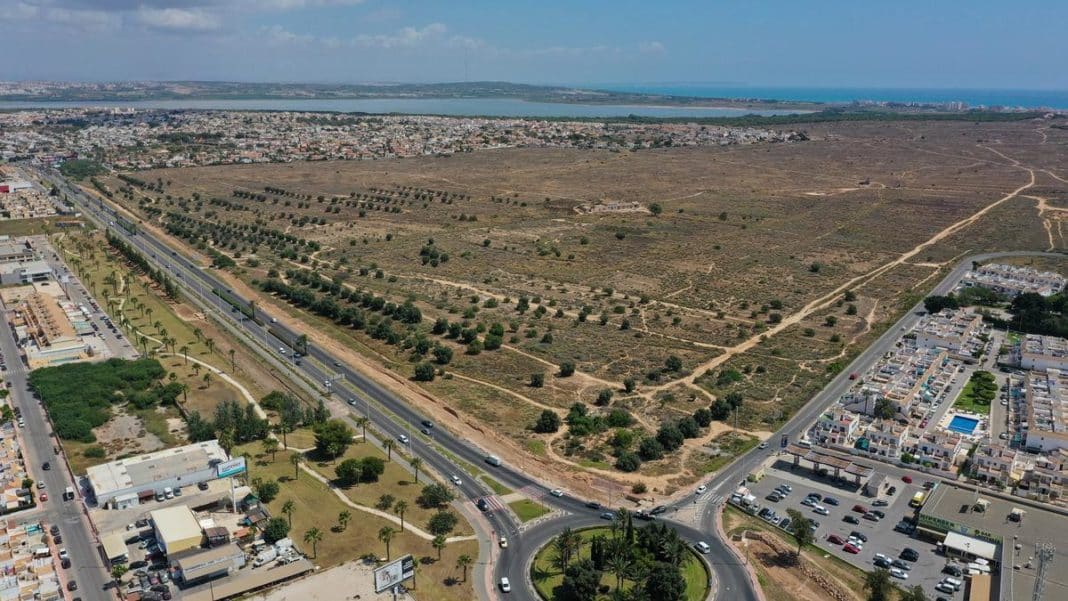Torrevieja council has finally given the go ahead to the construction of almost 7,500 new homes in La Hoya Sector 20, which are expected to get underway in September.
The properties, at an investment of 60 million euros, and with a capacity for 18,000 new inhabitants, will be built by TM Grupo Inmobiliario and Corpic on a 1.8 million square metre plot.
It will also include a commercial area of more than one hundred thousand square metres between Jardín del Mar and La Siesta-El Chaparral.
The project will be one of the most ambitious urban developments undertaken in the Valencian Community and will also cover last major plot of urban land available in Torrevieja. The remainder is all urbanised except for isolated plots, land that will have has difficulty being approved for building or the area that is part of the Natural Park of the lagoons of Torrevieja and La Mata.
The local government board of the City Council has now approved the modification of the urbanization project, which will allow work to begin on the ground, with the capacity to house 18,000 new residents, the same as the current population of Rojales.
Among the actions to be included in the urbanisation project is a bridge over the CV-95, in addition to the establishment of a large green area between the pine forest to the south of the lagoon of La Mata in the natural park and the urban plots. What is now known as el “camino de las cabras”, the “path of the goats”, will be part of one of the main roads in the plan which will connect the CV-95 with the centre of the urban area and the N-332.
Among a number of other franchises, the multinational DIY store Bauhaus will have an outlet in the commercial area.
THE PLAN IN FIGURES
- 60 million investment in urbanization
- 7,490 homes
- Residential capacity for 18,000 new inhabitants
- Build time of 25 years
- 1,800,000 square metres
- 413,000 square metres for green areas
Educational centres and public facilities
The project has allocated land for two educational centres, one Infant and Primary, the other Secondary, in addition to residential plots for public buildings. Also as a public endowment contribution there is the one hundred thousand square meters occupied by the International Auditorium and the conservatory, which was built at the end of the 2000s prior to the approval of the project.
The UTE business group, formed mostly between TM Real Estate Group and the Elche Corpic, must preserve and guarantee the integration of the main “farmhouse”, located in the centre of the plot, although in the planning it appears as commercial land, as well as the dozens of specimens of garroferos and oliveras trees, many of them over a hundred years old, that grow alongside the CV-95.
The UTE has confirmed that in addition to the urbanization works, building licenses will be requested to begin to build homes -residential tourist standard- and commercial surfaces. Something that the urban legislation allows without the basic infrastructures being completed one hundred percent provided that the economic guarantee guarantee is increased in the application in order to respond to possible deficiencies.
Reclassification of agricultural land
The project was first conceived in the late nineties. It is a huge reclassification of rustic to urban land that did not appear in the Torrevieja General Plan. The conservationist and environmental groups, especially Friends of the Wetlands of the South of Alicante, rejected the project outright, both for its enormous occupation of land and resources and for the fact of filling the only brick-free surface between the two lagoons.





